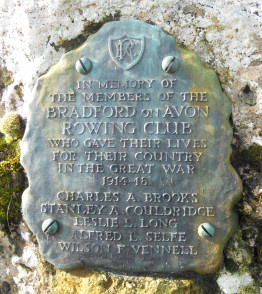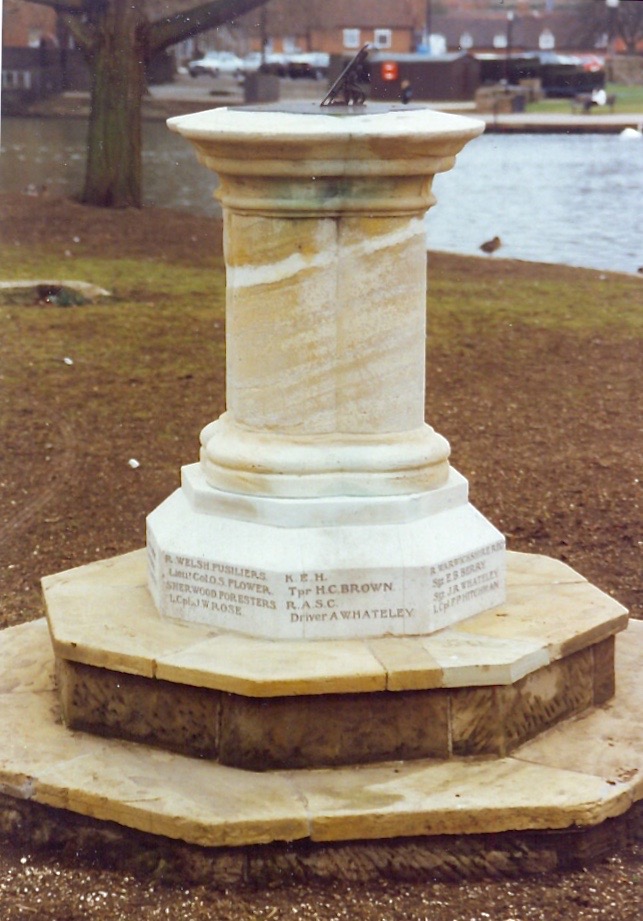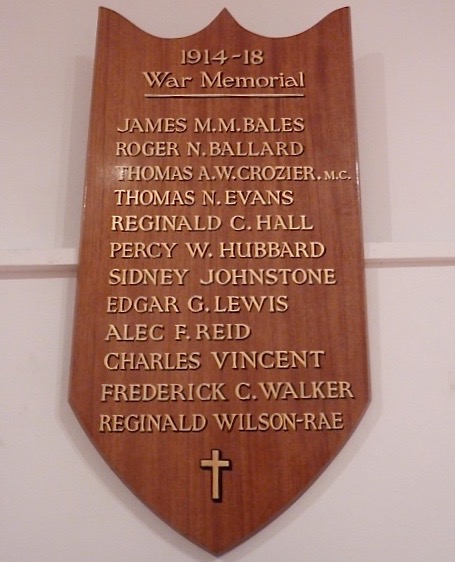
9 November 2018
By Tim Koch
Lady Diana Cooper claimed that, by the end of 1916, every man that she had ever danced with was dead, killed in the war. The socialite may have been guilty of hyperbole, but it is a fact that nearly 10 million servicemen died between 1914 and 1918. A similar number of civilians perished. The conditions produced by the First World War were also largely responsible for the spread of the so-called Spanish Flu pandemic of 1918 that killed between 50 and 100 million worldwide, three to five per cent of the world’s population. Further, over four million died in the wars that occurred in the five years after 1918.
Remembrance Sunday 2018 sees the 100th anniversary of the Armistice of 11 November 1918. An armistice is not a peace settlement but this was the formal agreement that ended the fighting between the Allied Powers and the German Empire. In the previous two months, there had also been an Armistice with each of Germany’s allies: Austria-Hungary, Bulgaria and the Ottoman Empire.

Perhaps two-thirds of the 100,000 surviving British war memorials date back to the 1914 – 1918 war. There are several reasons for this: the sheer numbers of casualties; the fact that so many volunteers and civilians were affected compared to previous wars; the ban on repatriation of the dead from overseas. Thus, the many who were bereaved had no graves at home as a focus for their grief. Also, perhaps these people were motivated by a strong sense of living through a world-changing historic moment that needed to be remembered. The result was that local communities in towns and villages, but also members of the same workplace, school, church, interest group or sports club, spontaneously formed committees to create war memorials to commemorate ‘their’ dead. The prolific erection of monuments was not a top-down movement, the initiative came as much from the ‘lower’ as the ‘higher’ social classes, despite it being an age of deference. Even the Cenotaph in London’s Whitehall, the site of the annual National Service of Remembrance, was originally planned by the authorities as a temporary structure built only to stand for the Peace Parade of 1919. It became a permanent monument solely due to public pressure. In days past, men would remove their hats when passing it.

Members of rowing clubs, disproportionately possessing youth, fitness, and a sense of comradeship, would have been among the first to volunteer. When their clubs eventually considered how the war and its effects should be remembered, the debates recorded in the minutes of Kensington Rowing Club were perhaps typical. Should all the members who served in uniform be named? Perhaps those who served overseas only? Some argued that only the dead should be recorded. This gave rise to the question, should this include everyone who was ever a member – or only those who were ‘paid up’ at the outbreak of war? In Kensington’s case, the club’s president paid for a brass plaque with the names of the dead who were members in August 1914 only. Another member produced a photograph album with those who served and survived pictured in the opening pages, and with all those who were ever members and who died pictured at the end (including two not put on the brass plaque memorial as they were not members at the start of the war).

Kensington’s plaque, with only the dead named, is the most common form of memorial in the UK. However, it seems that in Australia, New Zealand and North America at least, it was more usual to list all those who ‘joined up’ with the names of the dead and wounded marked in some way. Occasionally, the memorial took a practical form; in West London, both Quintin Boat Club and the West End Amateur Rowing Association built indoor rowing tanks to remember their war dead.
There follow pictures of all the rowing club war memorials that I have been able to collect. Unless they form part of the same monument, I have not included those for the Second World War, partly for reasons of space and partly because The Great War seems to symbolise all wars. I have put them in club alphabetical order to avoid apparently ranking them. Some memorials are simple, some are more elaborate and expensive, but no one is superior to another.









The club secretary’s preamble to the above makes reference to the ‘bumping’ races known as Eights and Torpids, and of places on the river at Oxford:
Though this book is but a record of the little doings of a college club, this page cannot be turned by him to whom it falls to continue that record without a brief word of the years which have lapsed since the last was written and an acknowledgement, however inadequate, of our feelings towards those who made it possible that this page should be turned.
These are the members of Eights and Torpids of past years who died on the field of honour. Perhaps in the desperate situations which they were called upon to encounter, the memory of a boat brought in safely past the College barge at last when no hope had seemed left in the Gut or on the Willows may have been an element in their faith.
I include this here as it seems a good a memorial as one in wood, brass or stone.








(No Pic) Evesham Rowing Club, Evesham, Worcestershire, England. Click here.


































(No Pic) Worcester Rowing Club, Worcestershire, England. Click here.
Several of the above memorials include the words of the Roman poet, Horace, Dulce et decorum est pro patria mori. It is the first line of this translation:
How sweet and right it is to die for one’s country:
Death pursues the man who flees,
Spares not the hamstrings or cowardly backs
Of battle-shy youths.
“Dulce et Decorum Est” is also the title of a poem by Wilfred Owen (who was killed a week before the Armistice). It describes an attack by poison gas. The last verse reads:
If you could hear, at every jolt, the blood
Come gargling from the froth-corrupted lungs,
Obscene as cancer, bitter as the cud
Of vile, incurable sores on innocent tongues,
My friend, you would not tell with such high zest
To children ardent for some desperate glory,
The old lie: Dulce et decorum est
Pro patria mori.
To many who survived it, The Great War seemed to be The War To End Wars. Twenty years later, most accepted that war was the only way to stop the horrors of National Socialism. Since the end of the Second World War in 1945, 16,000 members of the UK armed forces and more than 100,000 members of the U.S. armed forces have died on active service. One hundred years on from the Armistice, we still cannot choose between Owen and Horace.

I am still accepting pictures of rowing club war memorials for future posts. Send them to tim(dot)koch123(at)gmail(dot)com. See my technical notes here.

Thank you Tim for such a moving tribute to rowers. Lest We Forget
Thank you Tim. A beautifully written and most poignant article. The last sentence, especially so.
I am surprised that rowing ever got going again after the the huge number of deaths in the first World war.
Nice job. Great tribute. Thanks.
Sent from my iPad
>
An excellent and worthy endeavour. Well done.
David Simmonds
Llandaff RC
Bernard Hempseed writes: In this post of rowers’ memorials is included a photo of the one at Barwon Rowing Club in Geelong, Victoria, Australia. I noticed that it has a broken column. This means that it was manufactured to appear broken rather than being broken subsequent to installation. A broken column is a Victorian symbol that is often seen in old cemeteries and it means a life taken young. The Henry Searle monument in the Parramatta River, Sydney, also consists of a broken column. I think we have one on one of our war memorials that I have seen but can’t just remember exactly where it is, somewhere not too far away, I think.
Thank you, Bernard. Yes, a broken column can symbolise a fallen leader or unfinished work and is sometimes used on tombs for those whose life was deemed cut short.